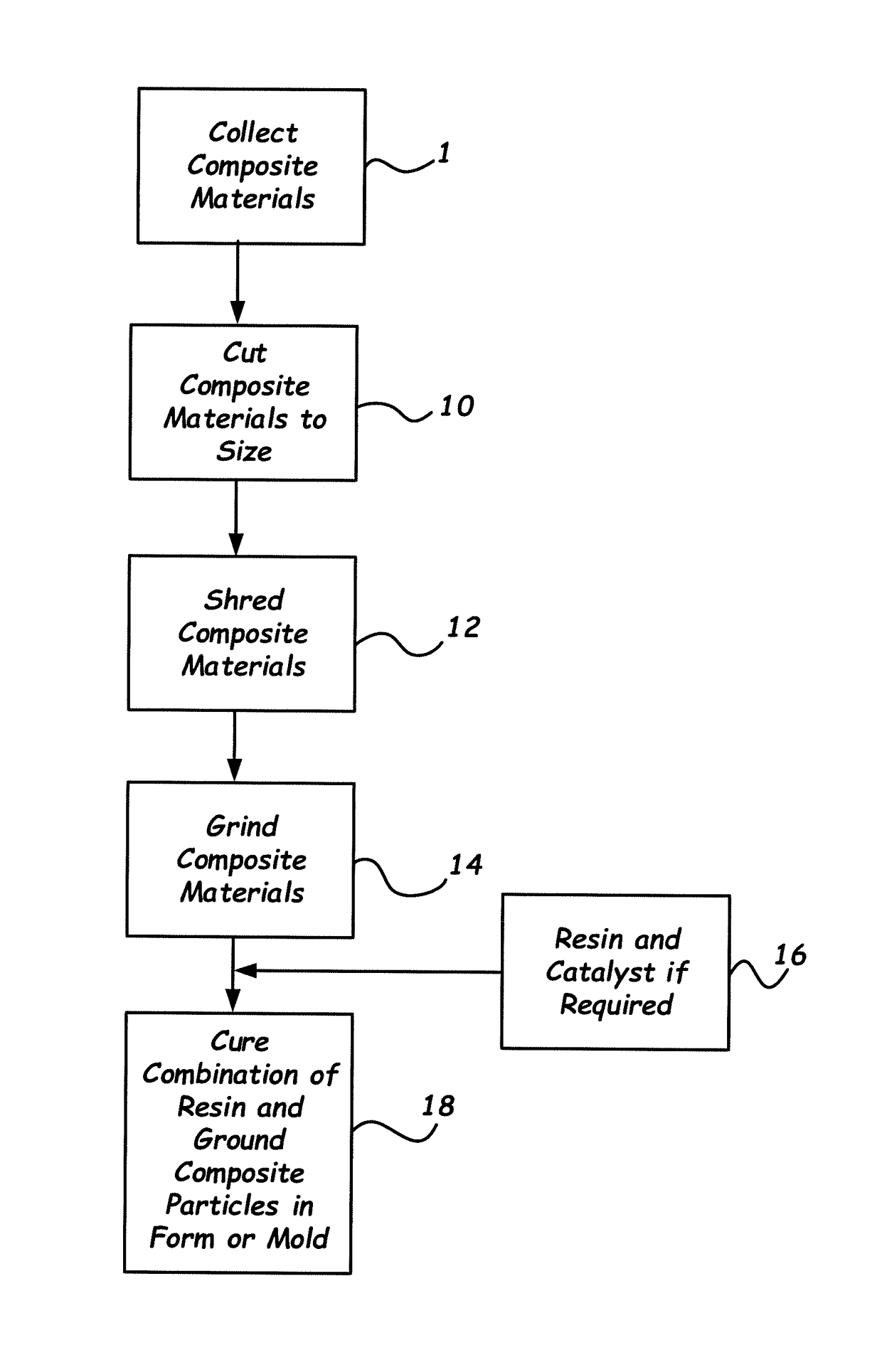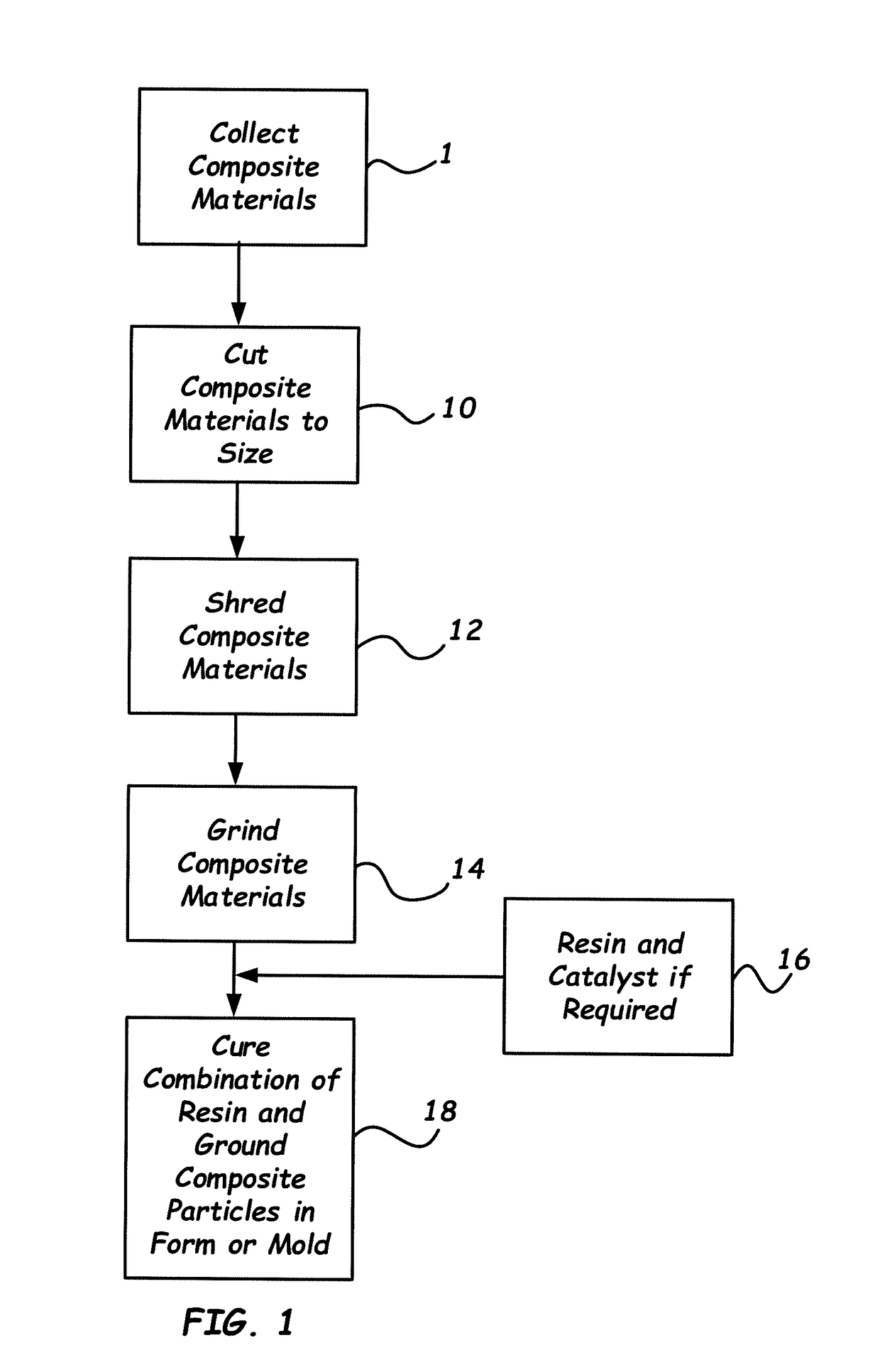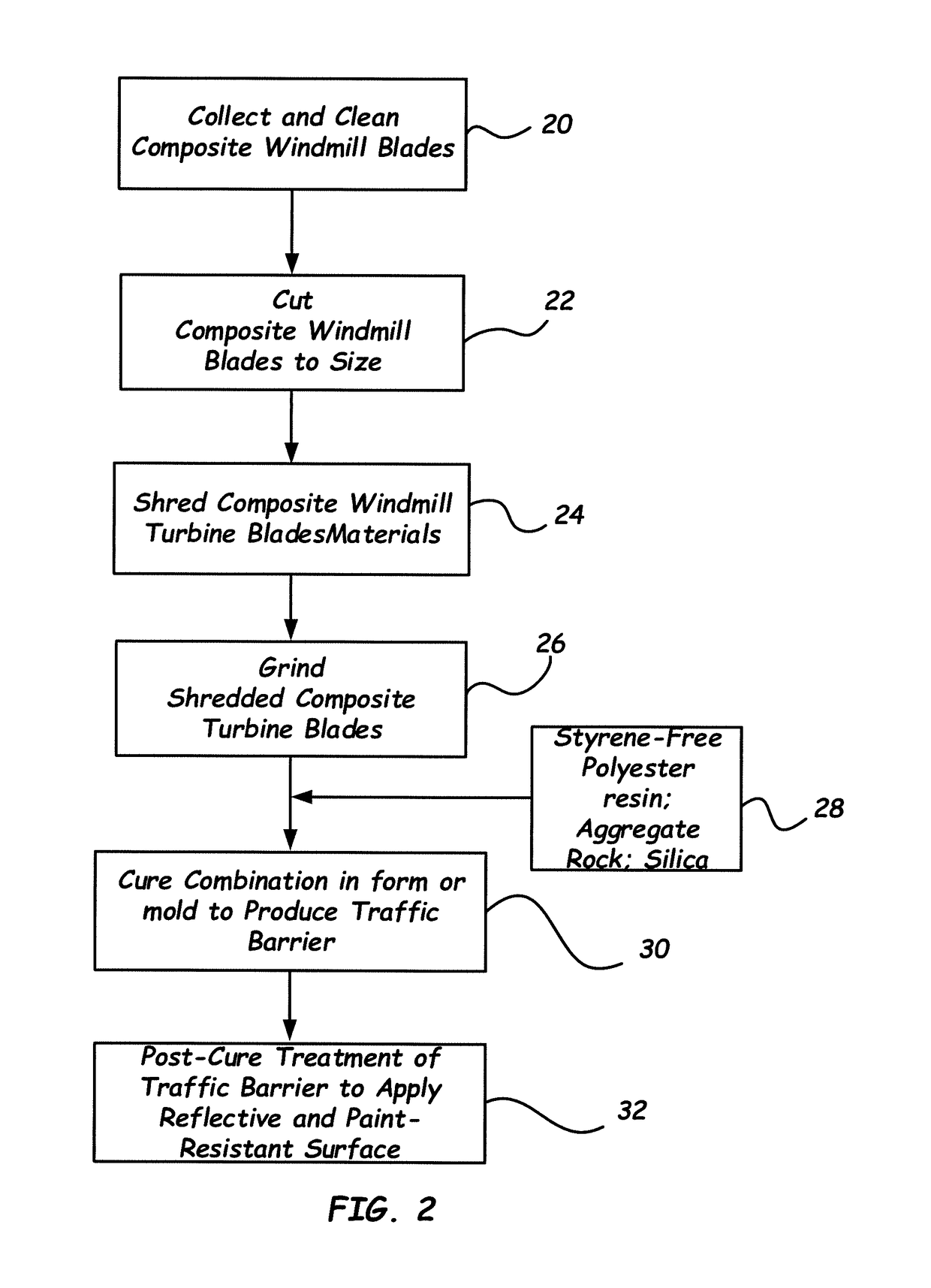Recycled composite materials and related methods
- Summary
- Abstract
- Description
- Claims
- Application Information
AI Technical Summary
Benefits of technology
Problems solved by technology
Method used
Image
Examples
example 1
Manufacture of Prototypes
[0083]Prototypes with dimensions of about 0.75″×1.0″×10″ were produced with the following mixture:[0084]23% resin by weight[0085]15 %ground recycled fiberglass product with ¼″ fiber length[0086]20% silica[0087]42% aggregate rock in varying sizes
[0088]The mixture was packed into a high density polyethylene molds and cured under vacuum pressure. The prototypes were machined following curing.
example 2
Prototype Testing—Flexural Bending
[0089]A flexural bending test was performed on prototypes according tea Example 1 with the following results.
TABLE 1DisplacementMaxWidthThicknessat Max LoadLoadMOEMORSpecimen(in)(in)(in)(in)(Psi)(psi)State11.0000.7500.180175.72134583012.4Vacuum Bagged-Smooth21.0000.7500.153152.62093472786.7Vacuum Bagged-Rough31.0000.7500.140210.43370813605.0Vacuum Bagged-Smooth / Rough41.0000.7500.135158.72171932719.8Hard Packed51.0000.7500.154177.61958613044.4Hard Packed61.0000.7500.118130.51157462236.8Hard PackedMean1.0000.7500.148169.22264482901.0St. Dev0.0000.0000.00426.31040245.683450.980COV0.0000.00016.26715.54617.77315.546The modulus of elasticity (MOE) and the modulus of rupture (MOR) calculations were performed for each specimen and an average was calculated. The sample had an average MOE of 226,448 psi and a MOR of 2,901 psi.
example 3
Prototype Testing—Compression
[0090]A compression test was performed on smaller sections of prototypes according to Example 1 with the following results.
TABLE 2CompressiveCompressivestress atstrain atModulusExtension atMaximumMaximum(automaticWidthThicknessMax LoadMax LoadLoadLoadyoungs)(in)(in)(in)(lbf)(ksi)(%)(psi)10.9960.990−0.050−11573.95311.746.1833934020.9550.990−0.045−11138.15911.735.9635334130.9040.990−0.053−10782.11012.056.8834185340.9440.984−0.043−10934.71611.775.6236760850.8850.992−0.044−9776.65311.155.5535862360.9430.988−0.054−105683.75511.477.07314801Mean0.9380.989−0.048−10814.89111.666.21345928St. Dev0.0390.0030.005598.5390.3110.63818520COV 4.1790.259−10.061−5.5342.66710.2755The prototype sections performed remarkably well, averaging a maximum stress of 11,660 psi.
PUM
| Property | Measurement | Unit |
|---|---|---|
| Temperature | aaaaa | aaaaa |
| Fraction | aaaaa | aaaaa |
| Fraction | aaaaa | aaaaa |
Abstract
Description
Claims
Application Information
 Login to View More
Login to View More - R&D
- Intellectual Property
- Life Sciences
- Materials
- Tech Scout
- Unparalleled Data Quality
- Higher Quality Content
- 60% Fewer Hallucinations
Browse by: Latest US Patents, China's latest patents, Technical Efficacy Thesaurus, Application Domain, Technology Topic, Popular Technical Reports.
© 2025 PatSnap. All rights reserved.Legal|Privacy policy|Modern Slavery Act Transparency Statement|Sitemap|About US| Contact US: help@patsnap.com



